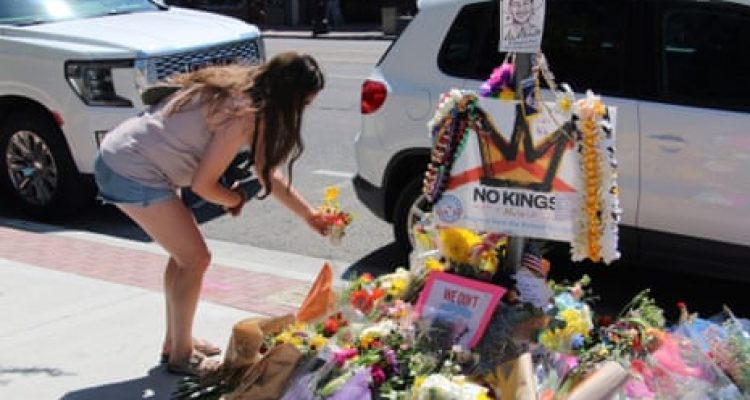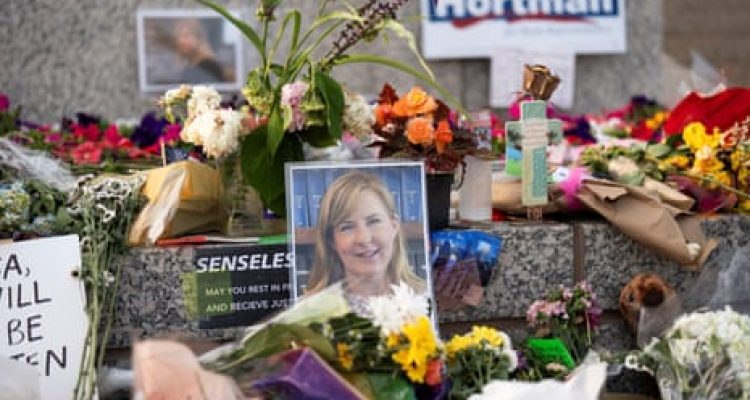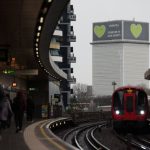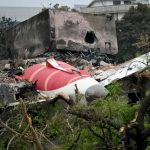Northern Ireland faces stark questions over the racism, xenophobia and intolerance that has forced families from abroad to flee
First came the shouts as the crowd worked its way through narrow terraced streets, proclaiming its mission to rid the town of “scum”. Then came the shattered glass as rocks exploded through windows. Then the flames, licking up curtains and spreading to sofas, carpets, books and framed pictures until smoke billowed into the summer night.
They might have been scenes from another century, another country, but they played out inNorthern Irelandthis week in the glare of rolling news and social media, which recorded a soundtrack of glee and hate. “Where are the foreigners?” the mob shouted.
The targets werefamilies that were different– different nationality, different ethnicity, different skin tone, different language. The goal was expulsion – or immolation. “There’s someone in that room inside,” said a voice caught on video. “Aye, but are they local?” responded a comrade. “If they’re local, they need out. If they’re not local, let them stay there.”
No one died in Ballymena, the County Antrim town that erupted on Monday andflared for the rest of the week, or in other towns with smaller, copycat mayhem, but families fled, dozens of police were injured and Northern Ireland faced stark questions about racism, xenophobia and intolerance.
Three decades ago, the Good Friday agreement drew a line under the Troubles. Republican paramilitaries that wanted a united Ireland, and loyalist paramilitaries that wanted the region to remain in the UK, wound down the killing.
Peace brought the novelty of immigration and diversity. In the 2001 census just 14,300 people, or 0.8% of the overall population, belonged to a minority ethnic group. By 2021 it was 65,600 people, or 3.4%. Compared with England (18%), or Scotland (11%), Northern Ireland remains very white.
Despite this, many residents in Ballymena, a mainly working-class, Protestant town 25 miles north of Belfast, believe foreigners have “invaded”, “infested” and “ruined” their community.
It was not only the hundreds of young men in hoods and masks who hurled missiles: older residents, during lulls in violence, endorsed the disturbances. “We want our voices to be heard. If this is the only way, so be it,” said one woman in her 30s, who declined to be named.
The Police Federation of Northern Ireland said its members, by drawing the wrath of mobs, had averted a pogrom.
The spark was an alleged sexual assault on a teenage girl by two 14-year-old boys, who appeared in court with a Romanian interpreter and were charged with attempted rape. Loyalist groups in other areas took that as their cue to protest. “It’s time to take a stand and stop welcoming these illegal migrant gangs flocking into our town, paedophiles, drug pushers, human traffickers, prostitutes,” said a group in Portadown, exhorting people to march on a hostel.
Such hostility has a blunt, facile explanation: some communities do not like outsiders – a broad, evolving category known occasionally in Northern Ireland as “them ’uns”. Protestant loyalist mobs in Belfast burned Catholics from their homes at the outset of the Troubles in 1969. Ballymena earned notoriety in the 1990s and mid-2000s with sectarian attacks on Catholic schools and churches.
Loyalists in nearby towns have been blamed for a sporadic campaign of paint bombs, smashed windows, graffiti and threatening posters targeting non-white residents. Last year at leasteight African families– half of them including nurses – were forced toflee an estate in Antrim town.
“There is fundamental racism in some places that, to put it nicely, have a proud sense of social and cultural cohesion,” said Malachi O’Doherty, a commentator and author of How to Fix Northern Ireland. Communities that are accustomed to living on the same estate can bristle when outsiders take houses that might otherwise have gone to friends or relatives, he said. “Whether it’s Catholics or Roma, it’s seen as a dilution of that community.”
Just 4.9% of Ballymena’s population is non-white, according to the 2021 census, and very few of the new arrivals are asylum seekers, yet there is widespread belief in proliferating “scrounging refugees”, and scepticism about official statistics. “What we’re reading is completely different from what the government is telling us,” said one resident in his 50s. The riots were welcome and overdue, although, he said, the noise was disturbing his sleep.
The current strife has a seasonal aspect: summer is when loyalists – and to a lesser extent republicans – assert their identity by parading with drums and flutes and lighting bonfires, traditions that fuel tension and confrontation.
Catholics have joined Protestants in anti-immigrant actions and staged their own protests in Catholic areas, but those eruptions tend to be smaller and less frequent. “Catholics almost take a sectarian pride in not being racist. ‘Oh, we’re not like them,’” said O’Doherty.
Despite a gritty reputation, Northern Irelandscores betterfor housing, unemployment and poverty than many parts of England, Wales and Scotland. However, it has some of the worst education attainment rates in the UK and the highest rate of economically inactive people, metrics that hint at the alienation and hopelessness felt in some Catholic and Protestant working-class areas.
An education system that largely segregates the two main blocs also tends to silo minority ethnic pupils, said Rebecca Loader, a social science researcher at Queen’s University Belfast. “You have schools that have no diversity and schools with high levels, perhaps just separated by a few miles. Certain classes of people are never meeting. It’s not conducive to meeting and learning about the other.” Also, very little in Northern Ireland’s curriculum addresses racism, unlike curriculums in Britain, especially Wales, she said.
Two factors, neither unique to Northern Ireland, have aggravated the tension. One is politics. Leaders from across the political spectrum have condemned the violence and appealed for calm, as they did last August during asimilar flare-up. However, critics say some unionist parties – which represent loyalism – give mixed signals by defending “legitimate protest” and amplifying immigration myths.
Political unityfractured on Thursdayafter Gordon Lyons, the Democratic Unionist party (DUP) communities minister, complained on social media that he had not been consulted about a leisure centre in Larne hosting families evacuated from Ballymena. A short time later, a mob set the centre on fire. Hilary Benn, the Northern Ireland secretary, called on Lyons to reflect on his comments. Michelle O’Neill, the Sinn Féin first minister, suggested he should resign.
Paul Sceeny, an interim manager at the North West Migrants Forum in Derry, said growing internationalantipathy to immigrantswas affecting Northern Ireland. “People are becoming emboldened to use racist tropes. It’s part of a wider pattern,” he said.
The other factor is social media. Protest organisers use Facebook, TikTok and other platforms to rally support and broadcast the results. In Ballymena, rioters reportedly requested likes, follows and gifts from viewers while livestreaming the destruction of a house.
During the daytime calm this week, while authorities cleared debris from streets and foreign families packed up and left, youths huddled over phones and analysed clips, like actors reviewing a performance, seeking ways to improve before the next show.
















